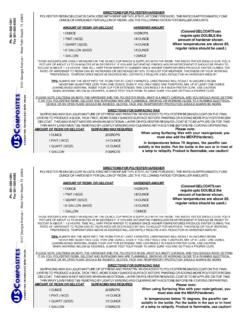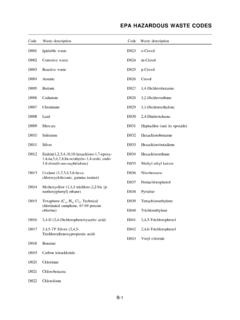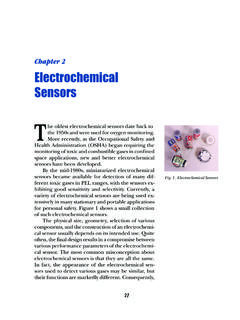Transcription of 166 CHAPTER 4 • INTRODUCTION TO ALKENES. …
1 166 CHAPTER 4 introduction to alkenes . structure AND REACTIVITY state of lower energy than the transition state for protonation to give a primary carbocation. Thestabilities of the carbocations themselvesdo not determine which reaction is faster; the relativefree energies of the transition states for carbocation formationdetermine the relative rates ofthe two processes. Only the validity of Hammond s postulate allows us to make the connectionbetween carbocation energy and transition-state n e e d H a m m o n d s p o s t u l a t e b e c a u s e t h e s t r u c t u r e s o f t r a n s i t i o n s t a t e s a r e u n c e r t a i n ,whereas the structures of reactants, products, and reactive intermediates are known. There-fore, knowing that a transition state resembles a particular species (for example, a carbocat-ion) helps us to make a good guess about the transition-state structure . In this text, we ll fre-quently analyze or predict reaction rates by considering the structures and stabilities ofreactive intermediates such as carbocations.
2 When we do this, we are assuming that the tran-sition states and the corresponding reactive intermediates have similar structures and energies;in other words, we are invoking Hammond s Apply Hammond s postulate to decide which reaction is faster: addition of HBr to 2-methyl-propene or addition of HBr to trans-2-butene. Assume that the energy difference between thestarting alkenes can be ignored. Why is this assumption necessary? reactions take place much more rapidly in the presence of certain substances that arethemselves left unchanged by the reaction. A substance that increases the rate of a reactionwithout being consumed is called a practical example of a catalyst is platinum inthe catalytic converter on the modern automobile. The platinum catalyst in the converter(CH3)2 CACH2+ HBr(CH3)2 CACH2+ HBr(CH3)2 CHCH2 LBrreaction coordinatereaction coordinateslower reaction(CH3)3 CLBr(CH3)3C|Br_faster reaction(CH3)2 CHCH2Br_|STANDARD FREE ENERGY higher-energytransition state lower-energytransition state DG DG less stableintermediatemore stableintermediate Figure reaction free-energy diagram for the two possible modes of HBr addition to s postulate states that the energy of each transition state is approximated by the energy of the corre-sponding carbocation.
3 The formation of tert-butyl bromide (right panel) is faster than the formation of isobutylbromide (left panel) because it involves the more stable carbocation intermediate and therefore the transitionstate of lower 11/26/08 8:39 AM Page CATALYSIS167brings about the rapid oxidation (combustion) of hydrocarbon exhaust emissions. This reac-tion would not occur were it not for the catalyst; yet the catalyst is left unchanged by the com-bustion reaction. The catalyst increases the rate of the combustion reaction by many orders are some important points about A catalyst increases the reaction rate. This means that it lowers the standard free energyof activation for a reaction (Fig. ).2. A catalyst is not consumed. It may be consumed in one step of a catalyzed reaction, butif so, it is regenerated in a subsequent implication of points 1 and 2 is that a catalyst that strongly accelerates a reactioncan be used in very small amounts.
4 Many expensive catalysts are practical for this A catalyst does not affect the energies of reactants and products. In other words, a cata-lyst does not affect the DG of a reaction and consequently also does not affect the equi-librium constant (Fig. ).4. A catalyst accelerates both the forward and reverse of a reaction by the same factor. The last point follows from the fact that, at equilibrium, the rates of a reaction and its re-verse are equal. If a catalyst does not affect the equilibrium constant (point 3) but increases thereaction rate in one direction, equality of rates at equilibrium requires that the rate of the re-verse reaction must be increased by the same a catalyst and the reactants exist in separate phases, the catalyst is called aheterogeneous catalyst in the catalytic converter of an automobile is a hetero-geneous catalyst because it is a solid and the reactants are gases. In other cases, a reaction insolution may be catalyzed by a soluble catalyst.
5 A catalyst that is soluble in a reaction solutionis called a homogeneous catalyst. G G G + catalystno catalysta catalyst does notchange G a catalyst increases therate (decreases G )productsreaction coordinatereactants STANDARD FREE ENERGYF igure reaction free-energy diagram comparing a hypothetical catalyzed reaction (red curve) to the un- catalyzed reaction (blue curve). 11/26/08 8:39 AM Page 167168 CHAPTER 4 introduction to alkenes . structure AND REACTIVITYA large number of organic reactions are catalyzed . In this section, we ll introduce the ideaof catalysis by considering three examples of catalyzed alkene reactions. The first example,catalytic hydrogenation,is a very important example of heterogeneous catalysis. The secondexample, hydration,is an example of homogeneous catalysis. The last example involves catal-ysis of a biological reaction by an Catalytic Hydrogenation of AlkenesWhen a solution of an alkene is stirred under an atmosphere of hydrogen, nothing if the same solution is stirred under hydrogen in the presence of a metal catalyst, the hy-drogen is rapidly absorbed by the solution.
6 The hydrogen is consumed because it undergoesan additionto the alkene double reactions are examples of catalytic hydrogenation,an addition of hydrogen to analkene in the presence of a catalyst. Catalytic hydrogenation is one of the best ways to convertalkenes into alkanes. Catalytic hydrogenation is an important reaction in both industry and thelaboratory. The inconvenience of using a special apparatus for the handling of a flammable gas(dihydrogen) is more than offset by the great utility of the the preceding reactions, the catalyst is written over the reaction arrows. Pt/C is read as Platinum supported on carbon or simply Platinum on carbon. This catalyst is a finely di-vided platinum metal that has been precipitated, or supported, on activated charcoal. A num-ber of noble metals, such as platinum, palladium, and nickel, are useful as hydrogenation cat-alysts, and they are often used in conjunction with solid support materials such as alumina(Al2O3), barium sulfate (BaSO4), or, as in the previous examples, activated carbon.
7 Hydro-genation can be carried out at room temperature and pressure or, for especially difficult cases,at higher temperature and pressure in a bomb (a closed vessel designed to withstand highpressures).Because hydrogenation catalysts are insoluble in the reaction solution, they are examplesof heterogeneous catalysts. (Soluble hydrogenation catalysts are also known and, althoughimportant, are not so widely used; Sec. ) Even though they involve relatively expensivenoble metals, heterogeneous hydrogenation catalysts are very practical because they can( )CH3(CH2)5CH2CH3 LCH2CH3(CH2)5 CHAH2+Pt/C1-octeneoctane( )yM%HHH2+Pt/C`)$%HHHHM cyclohexenecyclohexaneCatalyst PoisonsAlthough in theory catalysts should function indefinitely, in practice many catalysts, particularly het-erogeneous catalysts, slowly become less effective. It is as if they wear out. One reason for this be-havior is that they slowly absorb impurities, called catalyst poisons, from the surroundings; these im-purities impede the functioning of the catalyst.
8 An example of this phenomenon also occurs withthe catalytic converter. Lead is a potent poison of the catalyst in a catalytic fact, as wellas the desire to eliminate atmospheric lead pollution, are the major reasons why leaded gasoline isno longer used in automotive engines in the United 11/26/08 8:39 AM Page CATALYSIS169be filtered off and reused. Furthermore, because they are exceedingly effective, they can beused in very small amounts. For example, typical catalytic hydrogenation reactions can be runwith reactant-to-catalyst ratios of 100 or do hydrogenation catalysts work? Research has shown that both the hydrogen and thealkene must be adsorbed on the surface of the catalyst for a reaction to occur. The catalyst isbelieved to form reactive metal carbon and metal hydrogen bonds that ultimately are brokento form the products and to regenerate the catalyst sites. Beyond this, the chemical details ofcatalytic hydrogenation are poorly understood.
9 This is not a reaction for which a simplecurved-arrow mechanism can be written. The mechanism of noble-metal catalysis is an activearea of research in many branches of benzene ring is inert to conditions under which normal double bonds react readily:(Benzene rings can be hydrogenated, however, with certain catalysts under conditionsof high temperature and pressure.) You will learn that many other alkene reactions do notaffect the double bonds of a benzene ring. The relative inertness of benzene rings towardthe conditions of alkene reactions was one of the great puzzles of organic chemistry that wasultimately explained by the theory of aromaticity, which is introduced in CHAPTER Hydration of AlkenesThe alkene double bond undergoes reversible addition of water in the presence of moderatelyconcentrated strong acids such as H2SO4, HClO4, and addition of the elements of water is in general called , the addition ofwater to the alkene double bond is called alkene does not occur at a measurable rate in the absence of an acid, and the acid is notconsumed in the reaction.
10 Hence, alkene hydration is an acid- catalyzed reaction. Because thecatalyzing acid is soluble in the reaction solution, it is a homogeneous catalyst.( )HOHL$$H3CH3 CCACH22-methylpropeneH3 CCCH3CH3 OHLL""2-methyl-2-propanol(tert-butyl alcohol)+1 M HNO3(in excess;solvent) Give the product formed when each of the following alkenes reacts with a large excess of hy-drogen in the presence of Pd/C.(a)1-pentene (b) (E)-1, (a) Give the structures of five alkenes , each with the formula C6H12, that would give hexaneas the product of catalytic hydrogenation.(b) How many alkenes containing one double bond can react with H2 over a Pt/C catalyst togive methylcyclopentane? Give their structures. (Hint: See Study Problem , p. 153.)PROBLEMS( )styreneCH2 CHAcLethylbenzeneCH2CH3 LcLH2+ 11/26/08 8:39 AM Page 169170 CHAPTER 4 introduction to alkenes . structure AND REACTIVITYN otice that this reaction, like the addition of HBr, is regioselective.
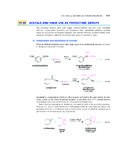

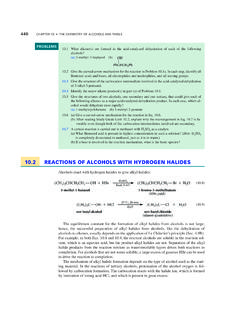
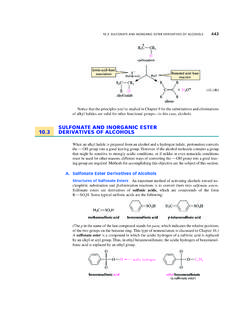
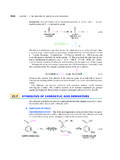
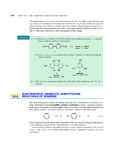


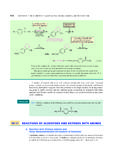

![Palladium-Catalyzed C[bond]N and C[bond]O …](/cache/preview/4/3/9/c/6/e/9/3/thumb-439c6e93d844ff459e84bd8810193673.jpg)
